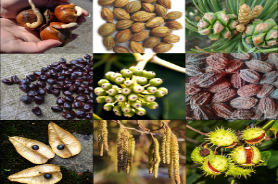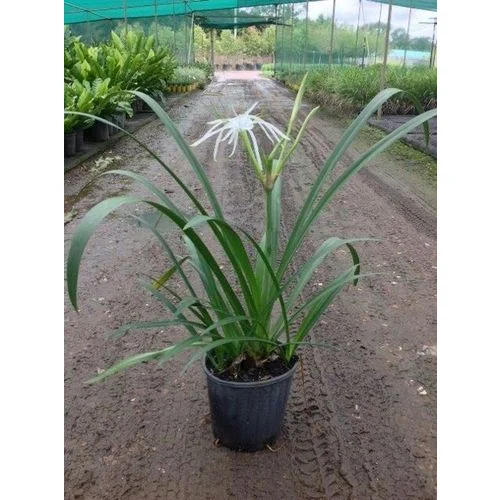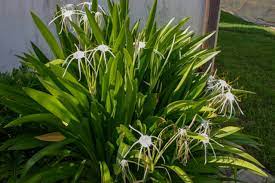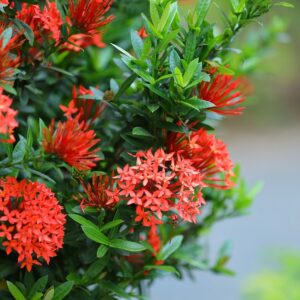Spider lily is a common name used to refer to various plant species from the genus Hymenocallis. These perennial bulbs are known for their unique and striking flowers, characterized by elongated petals that resemble spider legs. Native to tropical and subtropical regions, spider lilies are cherished for their beauty and adaptability.
**Appearance and Flowers:**
Spider lilies feature long, strap-like leaves that emerge from the base of the plant. The flowers are the standout feature, typically borne on tall stems that rise above the foliage. The blooms are composed of multiple delicate petals arranged in a star-like shape, with elongated petals extending outward, resembling the legs of a spider. The flowers come in shades of white, cream, yellow, or pink, depending on the species.
**Varieties:**
Several species of spider lilies exist, including Hymenocallis littoralis (Beach spider lily), Hymenocallis caribaea (Caribbean spider lily), and Hymenocallis speciosa (Peruvian daffodil). Each species has its own unique characteristics and geographic distribution, but they all share the distinct spider-like flowers.
**Cultivation and Care:**
Spider lilies are relatively easy to grow and require minimal maintenance. They prefer well-draining soil and thrive in sunny to partially shaded locations. These plants are adaptable to different soil types, including sandy or loamy soil. Spider lilies are generally drought-tolerant but benefit from regular watering during periods of dryness. They are hardy and can withstand a range of temperatures, making them suitable for various climates.
**Propagation:**
Spider lilies can be propagated through bulbs or seeds. Bulbs can be divided during the dormant season, and each division should have a few healthy roots attached. Bulbs or seeds can be planted in prepared soil, ensuring proper spacing to accommodate their growth. It may take some time for the bulbs to establish and produce flowers, but with patience, they will reward you with their stunning blooms.
**Uses and Symbolism:**
Spider lilies are primarily cultivated for their ornamental value. Their unique and elegant flowers make them popular additions to gardens, flower beds, and borders. They can also be grown in containers and used as cut flowers for floral arrangements. In some cultures, spider lilies hold symbolic meanings such as purity, beauty, and feminine power.
**Caution:**
It’s important to note that some species of spider lilies, particularly the bulbs, contain toxic compounds. The sap or ingestion of certain parts of the plant may cause skin irritation or digestive issues. As with any plant, it is essential to handle spider lilies with care and keep them out of reach of children and pets.
*Conclusion:*
Spider lilies, with their distinctive spider-like flowers and graceful foliage, bring a touch of intrigue and elegance to gardens and landscapes. Easy to grow and requiring minimal care, these plants offer beautiful blooms in various colors. Whether as a focal point in a garden or a delicate addition to a floral arrangement, spider lilies captivate with their unique charm and add a touch of natural beauty to any setting.














Reviews
There are no reviews yet.